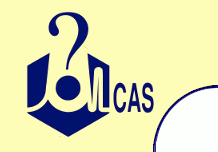




















Molcas features

Wave Functions, Energies, Properties
MOLCAS uses the following wave function models in calculations of total energies, electronic structures and molecular properties:- Hartree-Fock combined with DFT. Direct or semi-direct schemes are used, which makes possible calculations at this level with more than a thousand basis functions.
- Møller-Plesset second order perturbation theory (closed or restricted open shell) can be used for a cheap estimate of dynamic electron correlation effects.
- Multiconfigurational SCF (CAS or RAS) is used to treat systems where the electronic structure is not well described by a single determinant. Allows state averaging for treatment of many electronic states. Wave function up to about a million electronic configurations can be studied.
- Multiconfigurational second order perturbation theory (CASPT2) can be used to estimate dynamic electron correlation for electronic states obtained with the CASSCF method. A multi-state version allows the reference states to be modified by the correlation using an effective Hamiltonian approach.
- For small molecules the multi-reference CI (MRCI) method can yield highly accurate wave functions and energies.
- Molecules and radicals, well described by a single determinant, can also be studied using coupled-cluster theory (closed shell and restricted open shell CCSD(T)).
Molecular Structures, Vibrational Frequencies, Thermodynamics
Automatic geometry optimization using analytical or numerical gradient techniques are available. These procedure can be used to obtain equilibrium geometries, transition states, etc. both for ground and excited electronic states.Vibrational frequencies and thermodynamical quantities are computed for SCF/CASSCF wave functions using analytical second derivatives. Numerical frequencies are also available.
The resolution of identity approach (RI) and Cholesky decomposition (CD) is available at the HF/DFT/MP2/RASSCF/CASPT2 level of approximation. Analytic gradients are implemented for "pure" DFT. Analytic gradients to follow for HF, hybrid DFT and RASSCF in the near furture.
Excited States and Electronic Spectra
MOLCAS is in particular designed to study potential surfaces for excited states.- Energies may be obtained using all the wave function methods. Geometry optimization is possible also for state average RASSCF energies.
- Transition properties are computed at the RASSCF level using the RASSCF State Interaction Method, which is unique to the MOLCAS program.
- The same code can also be used to compute spin-orbit coupling using a effective one-electron SO Hamiltonian and so called Atomic Mean Field Integrals (AMFI).
- Automatic search at the RASSCF level for energy barriers, conical intersections, etc on excited state surfaces.
- Vibrationally resolved electronic spectra may be obtained using the MULA code for computing transition dipole moments between harmonic vibrational levels of two electronic states.
Environmental Effects
MOLCAS gives new possibilities to treat molecules in solutions and macromolecular systems.
- Solvent effects can be treated using the Onsager spherical cavity model or the Polarizable Continuum Model (PCM).
- Combined QM and molecular Mechanics (MM) calculations can be performed on macromolecular systems like proteins, molecular clusters (droplets), etc.
Molcas Farm
There is an online interface to run Molcas on one of our servers, we call this interface the Molcas farm. You can create an input, submit it and retrieve the result. Usage is limited to 5 minutes of CPU time. Mail to valera.veryazov@teokem.lu.se to get an access to Molcas farm.
